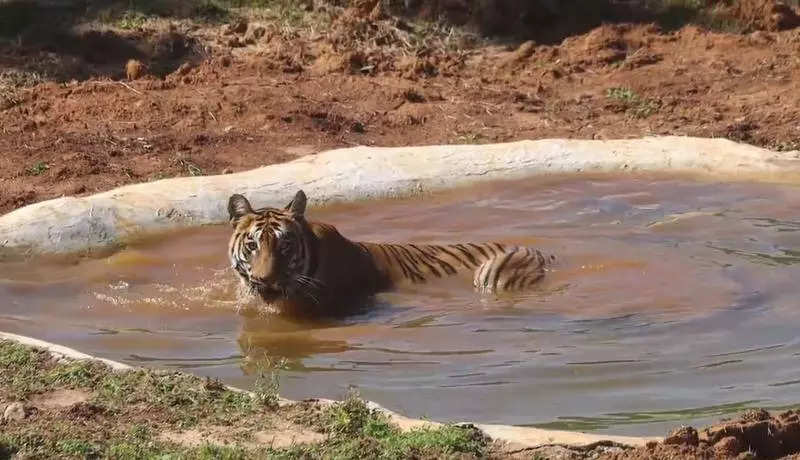Zeenat in mating mood, wildlife wing plans her release into the wild | Bhubaneswar News

Bhubaneswar: The wildlife wing is considering releasing tigress Zeenat from her enclosure into the wild of Similipal Tiger Reserve to help her find a mate. Zeenat is undergoing hormonal changes and wildlife experts feel releasing her into the wild could help her cohabit.
“We know from her behaviour, movement, aggression, and other symptoms that she is going through the estrus period. The committee will decide when exactly she should be released during the estrus cycle. If she is released during this time, it is expected that she will find a mate and stabilise,” chief wildlife warden Prem Kumar Jha said. During the estrus period, a predator undergoes hormonal changes that facilitate cohabitation.
The wildlife wing also revealed that during the estrus cycle, a tigress emits a particular odour that attracts male tigers. Jha said their monitoring has revealed that male tigers have been found roaming close to Zeenat’s enclosure. “The smell of a female tiger is a signal for the male tiger,” Jha added.
Four days after Zeenat was darted in West Bengal on Dec 28, the wildlife wing had kept her in a soft enclosure in Similipal south division.
Anup Nayak, former member secretary of the National Tiger Conservation Authority (NTCA), said the estrus cycle occurs every three weeks, and each cycle lasts between two and six days. “It is quite logical that during the estrus period, a tigress is released into the wild for quick mating and conception. The wildlife personnel on the job must be sure of the signs and symptoms that they have discovered estrus in the tigress,” Nayak said.
A tigress develops an affinity for a mate during such times, he added. Zeenat, which is three-year-old, was brought from Tadoba-Andheri Tiger Reserve in Maharashtra on Nov 13 to infuse a fresh genetic pool into Similipal.
“We know from her behaviour, movement, aggression, and other symptoms that she is going through the estrus period. The committee will decide when exactly she should be released during the estrus cycle. If she is released during this time, it is expected that she will find a mate and stabilise,” chief wildlife warden Prem Kumar Jha said. During the estrus period, a predator undergoes hormonal changes that facilitate cohabitation.
The wildlife wing also revealed that during the estrus cycle, a tigress emits a particular odour that attracts male tigers. Jha said their monitoring has revealed that male tigers have been found roaming close to Zeenat’s enclosure. “The smell of a female tiger is a signal for the male tiger,” Jha added.
Four days after Zeenat was darted in West Bengal on Dec 28, the wildlife wing had kept her in a soft enclosure in Similipal south division.
Anup Nayak, former member secretary of the National Tiger Conservation Authority (NTCA), said the estrus cycle occurs every three weeks, and each cycle lasts between two and six days. “It is quite logical that during the estrus period, a tigress is released into the wild for quick mating and conception. The wildlife personnel on the job must be sure of the signs and symptoms that they have discovered estrus in the tigress,” Nayak said.
A tigress develops an affinity for a mate during such times, he added. Zeenat, which is three-year-old, was brought from Tadoba-Andheri Tiger Reserve in Maharashtra on Nov 13 to infuse a fresh genetic pool into Similipal.
















